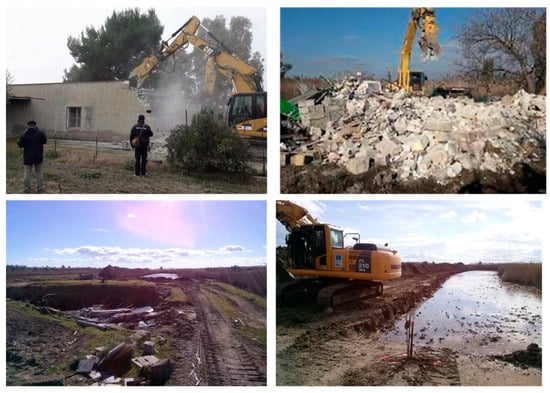As Uganda’s National Environment Management Authority (NEMA) continues its concerted efforts to reclaim and restore encroached wetlands nationwide, there is a pressing need for the public to verify whether the land they occupy is located within designated wetland areas.
The urgency of NEMA’s campaign has been underscored by recent evictions, which have left affected communities grappling with the consequences of encroachment.
Public sentiment largely agrees on the detrimental effects of wetland encroachment, which not only disrupts natural ecosystems but also exacerbates flooding and other environmental challenges during rainy seasons.
Questions have arisen among the public regarding NEMA’s past oversight, with some individuals who built on wetlands claiming ignorance of their land’s designation. President Museveni responded to these concerns by questioning why individuals would occupy wetlands without recognizing their environmental significance.
“My advice to the people in the wetland is that they should all leave peacefully. I have been seeing people comment that where was NEMA when these people were putting up these buildings? Why didn’t they stop them? But why should it be NEMA stopping these people? Don’t you have the eyes to see a swamp? You don’t need NEMA.; Who doesn’t know what a swamp is? Why do you need NEMA to stop you as if you are an idiot?” said the president.
Isaac Mutumba, a resident of Gganda in Wakiso district, shed light on the complexities faced by unsuspecting citizens who fall victim to misleading information from land brokers and dealers. He highlighted cases where wetlands were obscured or misrepresented as non-wetland areas during land transactions.
To address these issues, NEMA recently published all 8,613 gazetted wetlands in Uganda, designating them as protected critical ecosystems where activities such as encroachment, drainage, and pollution are strictly prohibited under Section 36 of Uganda’s National Environment Act. This move is part of a broader directive aimed at restoring wetlands to maintain their role as crucial catchment areas.
William Lubuulwa, the spokesperson for NEMA, mentions that besides consulting the gazette, there are alternative methods available to verify and identify a wetland, ensuring informed decisions are made before or when acquiring or planning to use land.
“One should Write an official request letter to NEMA addressed to the Executive Director requesting for verification of your land, In the request letter, include the Geographical Positioning Systems (GPS) coordinates of the boundaries of the land and attach relevant land documents,” he added.
The spokesperson added that for those might not be able to physically go to the headquarters, they can be helped at the NEMA regional offices in Lira, Hoima, Mbarara and Mbale housed in the Ministry of Water and Environment offices.
By engaging NEMA through this official process, Lubuulwa explained, citizens can ensure they make informed decisions and comply with environmental regulations regarding land use.
Statistics from the Environment Ministry indicate that Uganda loses 2.5 percent of its wetlands annually. Without intervention, it is projected that by 2040, only 1.6 percent of the wetlands will remain.
The Uganda Wetlands Atlas highlights that wetland destruction costs the country approximately two billion Shillings annually. Furthermore, contamination of water resources, exacerbated by reduced wetland buffering capacity near open water bodies, costs the country 38 billion Shillings annually.
To combat this issue, NEMA, in collaboration with other government entities including local governments, is currently restoring various wetlands. Encroachers are being evicted in several areas such as Lubigi, Lwera, Lurindo in Rukungiri, Akadot in Kumi, Kanyabukanja in Buhweju, Kole, Rwizi in Mbarara, Kitagata in Bushenyi, Pece in Gulu, Nakayiba in Masaka, and Kyabwato and Rwengwe wetlands in Ntungamo.
According to Section 55 of the National Environment Act, encroaching on wetlands is a criminal offense punishable by up to one year in jail, a fine of up to 600 million shillings, or both.


